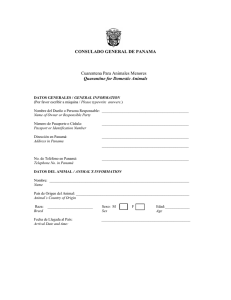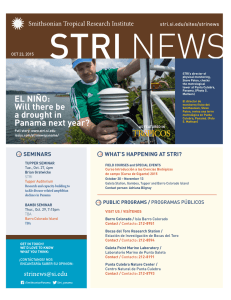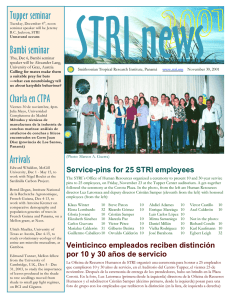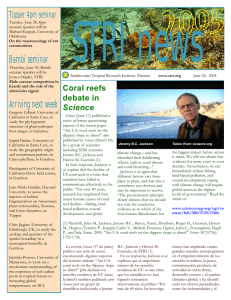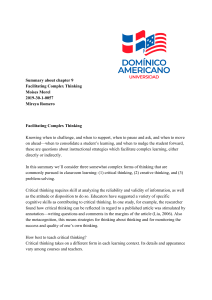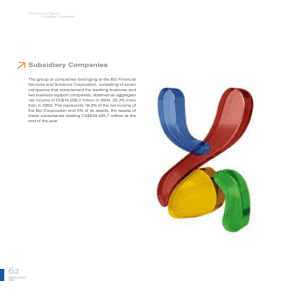BDG meeting Paleo-Talk Bambi seminars Arrivals
Anuncio
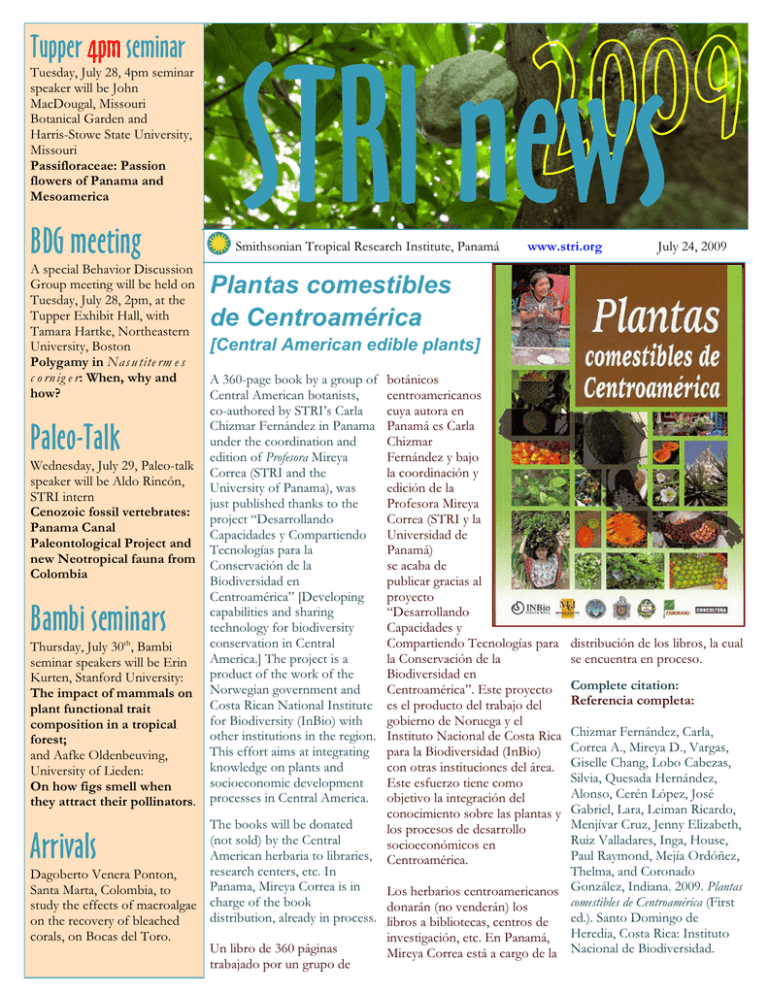
Tupper 4pm seminar Tuesday, July 28, 4pm seminar speaker will be John MacDougal, Missouri Botanical Garden and Harris-Stowe State University, Missouri Passifloraceae: Passion flowers of Panama and Mesoamerica BDG meeting A special Behavior Discussion Group meeting will be held on Tuesday, July 28, 2pm, at the Tupper Exhibit Hall, with Tamara Hartke, Northeastern University, Boston Polygamy in Nas u tite rm e s c o rn ig e r: When, why and how? Paleo-Talk Wednesday, July 29, Paleo-talk speaker will be Aldo Rincón, STRI intern Cenozoic fossil vertebrates: Panama Canal Paleontological Project and new Neotropical fauna from Colombia Bambi seminars Thursday, July 30th, Bambi seminar speakers will be Erin Kurten, Stanford University: The impact of mammals on plant functional trait composition in a tropical forest; and Aafke Oldenbeuving, University of Lieden: On how figs smell when they attract their pollinators. STRI news Smithsonian Tropical Research Institute, Panamá www.stri.org July 24, 2009 Plantas comestibles de Centroamérica [Central American edible plants] A 360-page book by a group of Central American botanists, co-authored by STRI’s Carla Chizmar Fernández in Panama under the coordination and edition of Profesora Mireya Correa (STRI and the University of Panama), was just published thanks to the project “Desarrollando Capacidades y Compartiendo Tecnologías para la Conservación de la Biodiversidad en Centroamérica” [Developing capabilities and sharing technology for biodiversity conservation in Central America.] The project is a product of the work of the Norwegian government and Costa Rican National Institute for Biodiversity (InBio) with other institutions in the region. This effort aims at integrating knowledge on plants and socioeconomic development processes in Central America. botánicos centroamericanos cuya autora en Panamá es Carla Chizmar Fernández y bajo la coordinación y edición de la Profesora Mireya Correa (STRI y la Universidad de Panamá) se acaba de publicar gracias al proyecto “Desarrollando Capacidades y Compartiendo Tecnologías para la Conservación de la Biodiversidad en Centroamérica”. Este proyecto es el producto del trabajo del gobierno de Noruega y el Instituto Nacional de Costa Rica para la Biodiversidad (InBio) con otras instituciones del área. Este esfuerzo tiene como objetivo la integración del conocimiento sobre las plantas y los procesos de desarrollo socioeconómicos en Centroamérica. distribución de los libros, la cual se encuentra en proceso. Complete citation: Referencia completa: Chizmar Fernández, Carla, Correa A., Mireya D., Vargas, Giselle Chang, Lobo Cabezas, Silvia, Quesada Hernández, Alonso, Cerén López, José Gabriel, Lara, Leiman Ricardo, The books will be donated Menjívar Cruz, Jenny Elizabeth, (not sold) by the Central Ruiz Valladares, Inga, House, American herbaria to libraries, Paul Raymond, Mejía Ordóñez, research centers, etc. In Thelma, and Coronado Dagoberto Venera Ponton, Panama, Mireya Correa is in Santa Marta, Colombia, to Los herbarios centroamericanos González, Indiana. 2009. Plantas charge of the book comestibles de Centroamérica (First study the effects of macroalgae donarán (no venderán) los distribution, already in process. ed.). Santo Domingo de on the recovery of bleached libros a bibliotecas, centros de Heredia, Costa Rica: Instituto corals, on Bocas del Toro. investigación, etc. En Panamá, Un libro de 360 páginas Mireya Correa está a cargo de la Nacional de Biodiversidad. trabajado por un grupo de Arrivals More arrivals Simon Plate and Sophie Charlotte Godow, Universität Potsdam, Germany, to study water, energy, and biogeochemical budgets in the humid tropics, on BCI. More visiting scientists and students at Galeta in 2009 Hannah Frank, Harvard University, to study why mainland anoles are different: An ecomorphological perspective, on BCI. Anping Chen, Princeton University, to study tropical dry forest restoration on the Pacific side of Panama. Miguel Pinto, Texas Tech University, to join the project on female choice in Túngara frogs, in Gamboa. Cristián Correa-Guzman, STRI-McGill NEO student, to assess the impacts of introduced salmonids on Patagonian freshwater ecosystems. Edmund Tanner and Simon Smart, University of Cambridge, to assess the importance of litterfall for tree growth and nutrient dynamics by a large scale litter removal experiment in a tropical deciduous forest in Panama, on BCI. Alberto Prado, McGill University, to determine the nature and tenure of herbivorous beetles on Cycads—is the relationship a living fossil? Matthew Cooke, University of Warwick, UK, to study the importance of leaves produced in the shade to tree seedlings moved from shade to small gap light regimes, on BCI. Jeremy Wojdak, Radford University, to study fear, death and life history switch points: Cumulative effects of phenotypic plasticity and predation across three life stages, in Gamboa. One of STRI’s key activities in Panama is hosting scientists and students from around the world. At Galeta, Wayne Sousa, professor of the University of California at Berkeley, and five of his students are currently studying mangrove populations. Sousa has been coming to Galeta for 23 years. He brings students from Berkeley as part of their training; in turn, they may publish their results in theses or scientific papers. Four students from Marshfield High School, Wisconsin, and their coach, winners of the National Ocean Sciences Bowl (NOSB)—an academic science competition for high school students— won a one-week visit to BCI, Bocas and Galeta, from July 12-18. The student team that wins the competition is awarded a trip to a marinefocused research facility. They were accompanied by the NOSB director Katleen Meehan Coop. London have been doing research on behavior among drifter wasps and the genetic basis of such behavior in Polistine wasps. Reem Alamiri, first winner of the University of Virginia´s “Panama Initiative Internship” is studying solid waste management in the city of Colon, aiming to improve its efficiency and sustainability, combining the municipality and the private sector. McGill University intern Kelly Garton is preparing a poster about the rise of the Isthmus and the Gatun Formation to be used as an educational tool. Mallory Uzel, a high school volunteer from Virginia, is helping at Galeta cleaning the aquaria, feeding their residents and providing tours to English speaking visitors at the Galeta Marine Laboratory. Luczkovich, focusing on three of the typical ecosystems on the Caribbean coast: mangroves, marine grass and coral reefs. Una de las actividades clave de STRI en Panamá, es recibir estudiantes y académicos visitantes de todas partes del mundo. En Galeta, Wayne Sousa, profesor de la Universidad de California en Berkeley y cinco de sus estudiantes estudian actualmente poblaciones de manglares. Sousa ha estado viniendo a Galeta por 23 años, y trae grupos de sus estudiantes de Berkeley como parte de sus cursos, quienes a la vez, pueden utilizar los resultados de sus estudios en tesis o artículos científicos. Cuatro estudiantes de Marshfield, Wisconsin y su entrenador, ganadores del National Ocean Sciences Bowl (NOSB)—un concurso de The photo above shows a group ciencias para estudiantes de of students from the University secundaria visitaron del 12 al 18 of East Carolina participating in de julio a BCI, Bocas y Galeta. Recently, four researchers from a course on marine ecology led El equipo ganador es premiado the Zoology Institute of con una visita a una instalación by their professor Joseph J. enfocada en investigaciones marinas. El grupo estuvo acompañado de la directora de NOSB, Katleen Meehan Coop. la Universidad de Virginia, estudia la recolección y disposición de basura en la ciudad de Colón, a fin de Fernando Santos-Granero to mejorar su eficiencia y Cape Town, South Africa, sustentabilidad en una alianza upon invitation to lecture at the University of Cape Town Recientemente, cuatro entre el municipio y las during the Sawyer Seminar investigadores del Instituto de empresas privadas. Kelly Series "Knowledge Diversity & Zoología de Londres estudian Garton, pasante de la Power: Science, the Indigenous el comportamiento entre Universidad de McGill, Movement & the Post-Colonial avispas nómadas y la base desarrolla un afiche sobre el University." genética de dicho surgimiento del Istmo y la comportamiento en avispas formación Gatún para usarlo del género Polistes. como herramienta de educación Reem Alamiri, primera pasante en escuelas primarias. Mallory Breedy, Odalisca, Guzman, de la “Iniciativa Panama”, de Uzel, estudiante de secundaria Hector M., and Vargas, Sergio. 2009. "A revision of the genus Eugorgia Verrill, 1868 (Coelenterata: Octocorallia: Gorgoniidae)." Zootaxa 2151(July): 1-46. STRI’s director of the Office Heckadon-Moreno of Communications and served as the first Heckadon-Moreno, Stanley. Public Programs, Stanley national environmental 2009. "Soná y el Río San Pablo Heckadon-Moreno, was authority in Panama, as en el invierno de 1953 según el invited by Panama’s National director of INRENARE naturalista W. Perrygo." "Epocas" Segunda Era Attorney General (Instituto de Recursos (Supplement to El Panamá (Procuraduría General de la Naturales Renovables) América) 24(5): 8-9. Nación) to lecture 40 top-level when Panama returned prosecutors from across the to the path of democracy, Heckadon-Moreno, Stanley. Republic of Panama. in 1990. 2009. "Alexander Wetmore y las aves de Cerro Campana, Panama’s Office of the El director de la Oficina 1951." "Epocas" Segunda Era Attorney General prosecutes de STRI de (Supplement to El Panamá crimes and corruption; Comunicaciones y América) 24(6): 10-11. recently, crimes against the Programas Públicos, Stanley environment have been added Heckadon-Moreno, fue to its jurisdiction. invitado por la Procuraduría General de la Nación de Besides describing the Panamá a ofrecer una “Por amor a la ciencia” by environmental challenges conferencia para 40 fiscales de Abdiel Bonilla. 2009. Siete, facing Panama in the XXI alto nivel de la República de Panamá América: July 23. Century, Heckadon-Moreno Panamá. used the opportunity to describe STRI’s research and La Procuraduría General de la education efforts throughout Nación administra justicia en The Smithsonian Channel will the Isthmus and abroad. crímenes y corrupción, y air a Spotlight on STRI on recientemente, los crímenes Sunday, July 26, at 7:30pm The audience proved contra el ambiente se han EST, and at 8pm Nature's extremely receptive. Some sumando a sus Vault. There are other stories issues, such as deforestation of responsabilidades. already showing on the critical watersheds, the Smithsonian Channel website destruction of coastal habitats Además de describir los retos series. Information about the and water contamination were ambientales que enfrenta cable providers who host the of particular interest. Several Panamá en el siglo XXI, Channel is available at: Heckadon-Moreno aprovechó http://www.smithsoniancha prosecutors were especially la oportunidad para describir nnel.com/site/smithsonian/ enthusiastic about channel_availability.do visiting STRI’s facilities with los esfuerzos en investigación y their staff in the near future. educación que lleva a cabo Departures New publications de Virginia, limpia los acuarios, cuida de sus residentes, y sirve como guía a visitantes de habla inglesa. La foto de la pagina anterior muestra a un grupo de estudiantes de la Universidad de Carolina del Este participantes en un curso de ecología marina liderados por el profesor Joseph J. Luczkovich, quien se enfocó en los tres ecosistemas típicos de la costa caribeña: manglares, pastos marinos y arrecifes coralinos. Heckadon lectures Panamanian prosecutors STRI in the news STRI on US TV STRI a través del Istmo y en el extranjero. La audiencia se mostró muy receptiva. Algunos asuntos, como la deforestación en cuencas críticas, la destrucción de los hábitats costeros y la contaminación de las aguas demostraron ser de gran interés. Algunos fiscales expresaron gran interés en visitar las instalaciones de STRI junto con los miembros de su personal, en un futuro cercano. Heckadon-Moreno fungió como la primera autoridad nacional del ambiente, en la capacidad de director del Instituto de Recursos Naturales Renovables (INRENARE) en 1990, cuando Panamá retornó a la vía democrática.
